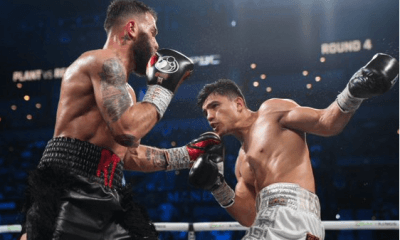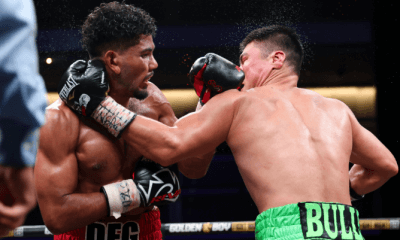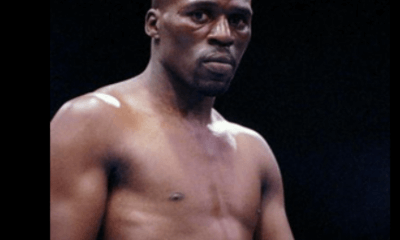Featured Articles
The Hauser Report: Amazon Says Hello to Boxing
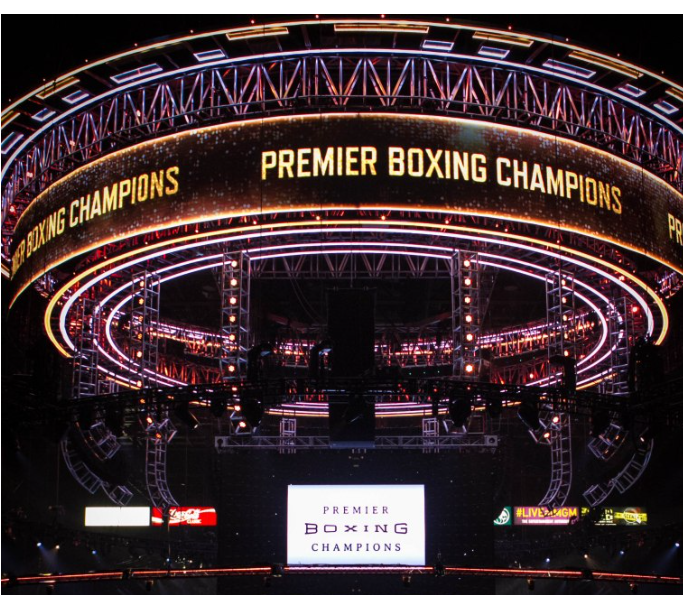
On December 7, Prime Video and Premier Boxing Champions announced what they described as a “multiyear rights agreement.” Prime Video is included in the Amazon Prime membership package (which costs $139 annually). Alternatively, Prime Video can be purchased separately for $8.99 per month.
Most of the terms in the Agreement were undisclosed. What’s publicly known is that:
(1) Prime Video will stream a series of PBC Championship Boxing events in the United States and other designated countries on an exclusive basis. But the announcement left open the possibility that PBC will continue to televise and stream boxing events apart from this series on other platforms.
(2) Prime Video will distribute PBC pay-per-view events in the United States with the first event expected to take place in March 2024. The PBC pay-per-view events that are streamed on Prime Video will also be available to viewers on linear TV through cable and satellite PPV distributors. It’s unclear whether Prime Video will distribute all of PBC’s pay-per-view events in the United States or whether PBC can distribute additional PPV events in the United States on other streaming platforms.
(3) The agreement is believed to call for 12-to-14 fight cards annually. The breakdown between pay-per-view shows and regular PBC Championship Boxing events wasn’t announced and, most likely, is undecided at the present time.
The deal gives PBC a HUGE platform for boxing. Prime Video has more than 150 million subscribers in the United States. But a lot of questions remain unanswered.
“Multiyear” means how many years? And is the length of the commitment firm or does it depend on one of the parties (most likely, Amazon) exercising an option to extend the initial term of the agreement?
What license fee, if any, will Amazon pay to PBC for its “free” boxing streams and what will the pay-per-view price points be?
If PBC streams additional non-pay-per-view boxing events on other platforms, how will it determine which events are on Amazon and which events are on other platforms?
Who will produce the Amazon shows and who will the on-camera talent be? It’s believed that PBC will be responsible for production with major decisions subject to approval by Amazon. Will members of the Showtime team who were laid off by Paramount be hired by PBC as independent contractors? Will Amazon want to match Al Michaels’ presence on Thursday Night Football with Jim Lampley on Amazon Prime fights?
And most important to fight fans; what quality control will there be in making the fights?
When the PBC-Amazon deal was announced, Marie Donoghue (Amazon’s Vice President for U.S. Sports Content & Partnerships) was quoted as saying, “We are thrilled to join with Premier Boxing Champions to bring the best boxers in the world to Prime Video, and to give more fans than ever the chance to experience these must-see events.”
That’s marketing-speak.
When PBC (backed by hundreds of millions of dollars in venture capital) rolled out its inaugural offering on “free” television on March 7, 2015, boxing fans were ecstatic. Its initial telecast (on NBC) showcased Keith Thurman and Adrien Broner and averaged 3.37 million viewers (including 554,000 in the coveted 18-to-34-year-old demographic). But things quickly soured. PBC’s fights failed the quality-control test. Viewers lost interest. Networks that wanted to televise certain PBC fighters were told that the fighter they wanted had been promised to another network. One by one, NBC, CBS, FOX, and ESPN (each of which had a deal with PBC) dropped by the wayside.
The Thursday night NFL games on Prime Video are on a par with other regular-season NFL games. But this isn’t like buying NFL rights. The NFL has an institutional interest in giving program carriers reliable high-quality content. Boxing promoters have a spotty track record in that regard. Will PBC and Prime Video give boxing fans high-quality match-ups or programming that has too many one-sided fights and contests for phony “championship” belts?
And there are other issues that Amazon will have to face.
Canelo Alvarez, Gervonta Davis, and Deontay Wilder are PBC’s most marketable fighters. Canelo will help Amazon further penetrate the Hispanic market. Davis and Wilder are exciting fighters with constituencies of their own. But Gervonta and Deontay come with a lot of baggage. There are well-documented instances of the physical abuse of women and, in Gervonta’s case, time spent in prison earlier this year as a consequence of running a red light and totaling a car owned by a woman named Jyair Smith. Smith later told the court that she had “begged” Davis for help after the accident: “I looked him in his eyes. I said I have to get home to my daughter, I’m pregnant. He never once came over to help me. He got his things and left.”
Is that the image Amazon wants?
And let’s not forget; an increasing number of big fights (including Deontay Wilder’s December 23 outing against Joseph Parker) are being contested in Saudi Arabia. To what degree, if any, will Amazon and PBC be willing to become complicit in sportswashing by the Saudi government?
This writer reached out to Harrison Raboy (Sports Publicity Lead for Prime Video) regarding the above issues. Mr. Raboy responded, “Appreciate all the questions. But right now, we don’t have anything more to share than what was in the press release.”
PBC’s deal with Amazon could be a huge plus for boxing. But that’s the same thing that boxing fans said initially about PBC’s deals with CBS, NBC, FOX, and ESPN.
Is there anyone at Amazon who has an in-depth understanding of the sport and business of boxing? Or has this deal been crafted primarily by marketing and tech people who are largely oblivious to the challenges ahead? Will this deal benefit Amazon, boxing fans, and boxing or just Premier Boxing Champions and a few people associated with the promoter?
To repeat: PBC’s deal with Amazon could be a huge plus for boxing. But Amazon should keep in mind that there are reasons HBO, Showtime, CBS, NBC, and FOX all walked away from PBC and boxing.
Thomas Hauser’s email address is thomashauserwriter@gmail.com. His most recent book – The Universal Sport: Two Years Inside Boxing – was published by the University of Arkansas Press. In 2004, the Boxing Writers Association of America honored Hauser with the Nat Fleischer Award for career excellence in boxing journalism. In 2019, Hauser was selected for boxing’s highest honor – induction into the International Boxing Hall of Fame.
To comment on this story in the Fight Forum CLICK HERE
-

 Featured Articles3 weeks ago
Featured Articles3 weeks agoThomas Hauser’s Literary Notes: Johnny Greaves Tells a Sad Tale
-
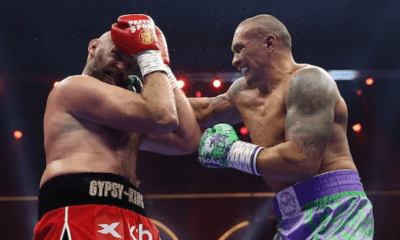
 Featured Articles2 weeks ago
Featured Articles2 weeks agoBoxing Notes and Nuggets from Thomas Hauser
-
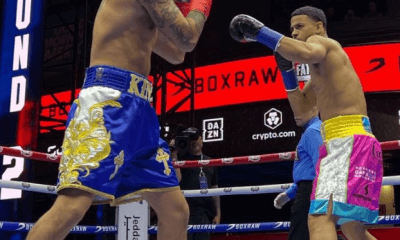
 Featured Articles4 weeks ago
Featured Articles4 weeks agoRolly Romero Upsets Ryan Garcia in the Finale of a Times Square Tripleheader
-
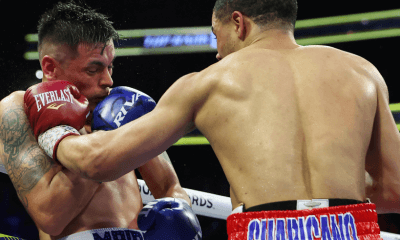
 Featured Articles4 weeks ago
Featured Articles4 weeks agoUndercard Results and Recaps from the Inoue-Cardenas Show in Las Vegas
-
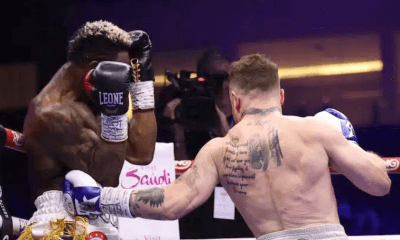
 Featured Articles4 weeks ago
Featured Articles4 weeks agoCanelo Alvarez Upends Dancing Machine William Scull in Saudi Arabia
-
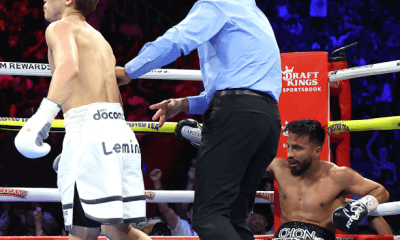
 Featured Articles4 weeks ago
Featured Articles4 weeks agoBombs Away in Las Vegas where Inoue and Espinoza Scored Smashing Triumphs
-
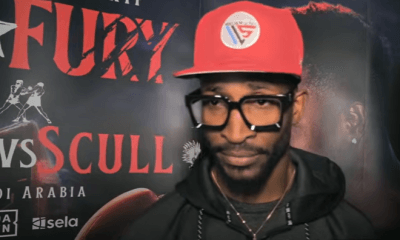
 Featured Articles4 weeks ago
Featured Articles4 weeks agoArne’s Almanac: The Good, the Bad, and the (Mostly) Ugly; a Weekend Boxing Recap and More
-
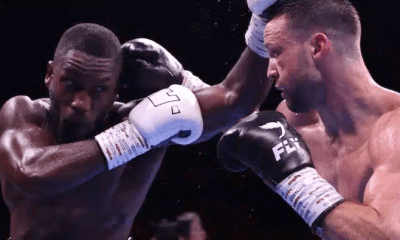
 Featured Articles1 week ago
Featured Articles1 week agoEkow Essuman Upsets Josh Taylor and Moses Itauma Blasts Out Mike Balogun in Glasgow

